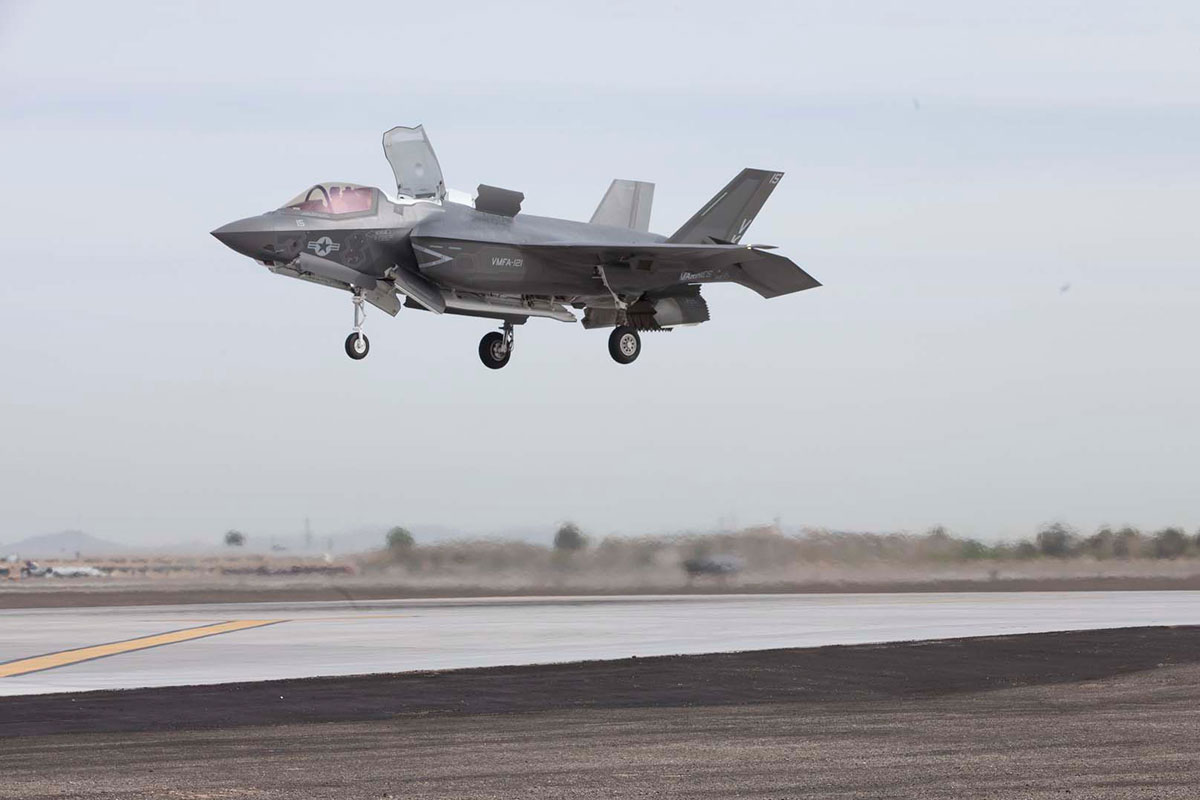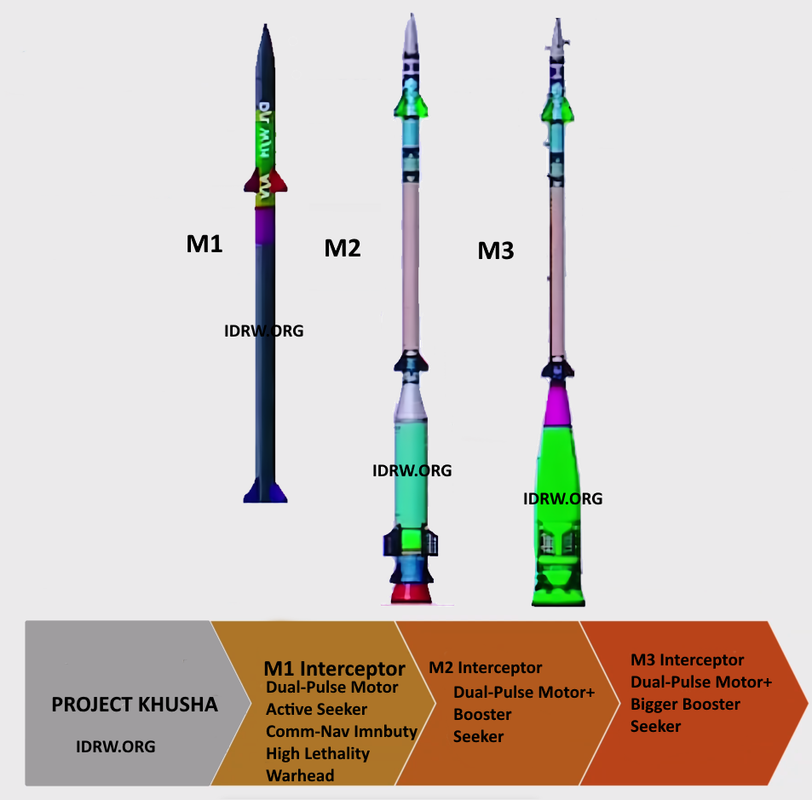SOURCE: AFI

Not many will remember but In 2010, the Indian Navy was considering the Lockheed Martin F-35 for its future aircraft carrier fighter requirements, a move that generated significant interest. At the time, Lockheed Martin’s Vice President of Business Development for India, Orville Prins, confirmed the company’s intent to respond to the Indian Navy’s Request for Information (RFI) with two F-35 variants: the STOVL (Short Takeoff and Vertical Landing) F-35B and the carrier-based F-35C.
While the F-35B initially appeared a more logical replacement for India’s aging Sea Harrier jump jets due to its vertical landing capability, the possibility of using the F-35C, designed for steam catapult launches, was also explored. Lockheed Martin conducted simulations and analyses to evaluate the F-35C’s capability to take off from India’s ski-jump carriers without needing a catapult system.
Continue readingSOURCE: AFI

The YouTube channel “Grim Reapers,” known for its detailed Digital Combat Simulator (DCS) simulations, recently carried out a fascinating scenario exploring how the Philippines’ new Indo-Russian BrahMos anti-ship missile batteries might fare against China’s navy in a hypothetical conflict. The simulation, titled “Philippines Brahmos Missile Batteries vs US & Chinese Carrier Groups (WarGames 241) | DCS,” tested the effectiveness of the BrahMos missiles in a series of strikes against both Chinese and US carrier groups, providing an insightful look at the potential combat outcomes.
The scenario begins by testing the BrahMos missile batteries against a Chinese naval fleet. In the first attempt, a single BrahMos missile was launched toward a Chinese Type 052D destroyer. The warship responded by launching its HQ-9B interceptor missile. The result was an interception success for the Chinese, as the BrahMos missile was neutralized before reaching its target.
Continue readingSOURCE: AFI

A Thane-based spacetech startup, InspeCity, has showcased its innovative robotic arm at the National Space Day Celebrations at DRDO. This robotic arm is designed to address the growing problem of space debris, which includes defunct satellites and other debris orbiting Earth.
As businesses like SpaceX continue to launch thousands of satellites into low Earth orbit, the risk of collisions and further debris generation is escalating. InspeCity is capitalizing on this opportunity by developing technologies for in-space repairs and controlled de-orbiting of satellites.
Continue readingSOURCE: AFI

Chennai, Tamil Nadu will host the Indian Air Force (IAF)’s 92nd Raising Day celebrations on October 8, 2024. This marks the third time the event is held outside Delhi, following previous celebrations in Chandigarh and Prayagraj.
The festivities will commence at 7:45 AM with a grand parade and fly-past at a designated location in Chennai. Afterward, the city will witness a captivating airshow over Marina Beach. This spectacular display will showcase the IAF’s frontline fighter jets, including the Rafale, Sukhoi, and Tejas, providing a glimpse into the country’s advanced aviation capabilities.
Continue readingSOURCE: IDRW.ORG TEAM

In a significant boost to India’s indigenous aerospace industry, SAFHAL Helicopter Engines Private Limited (SAFHAL), a joint venture between Hindustan Aeronautics Limited (HAL) and Safran, has signed an airframer contract to develop and manufacture a new generation of high-power engines named “Aravalli.” These engines are poised to power HAL’s upcoming medium-lift helicopters, the Indian Multi-Role Helicopter (IMRH) and the Deck-Based Multi-Role Helicopter (DBMRH).
The Aravalli engines are estimated to cost around 12-14 crores per unit. With a planned production of over 400 IMRH and DBMRH helicopters, each requiring 3-3.5 engines throughout their 30-year service life, the total demand for Aravalli engines is expected to reach nearly 1300 units.
Continue readingSOURCE: IDRW.ORG TEAM

The Indian Air Force (IAF) is actively working to integrate a wide range of indigenous weapon systems onto its Sukhoi-30MKI fleet. The Defence Research and Development Organisation (DRDO) has developed 16-18 weapon systems that are currently undergoing integration processes.
A key player in this endeavor is the IAF’s Software Development Institute. The institute is responsible for ensuring seamless communication between the various sensors onboard the Sukhoi-30MKI, including its Mission Computer (MC) system, and the newly developed weapon systems. This integration is crucial for the successful operation of these weapons and their effective utilization in combat scenarios.
Continue readingSOURCE: AFI

Despite significant modernization efforts, the Indian Army continues to face a strategic challenge in terms of long-range multiple rocket launcher systems (MRLS) compared to its regional rivals. While the Indian Army has made strides in acquiring and developing advanced weaponry, its current capabilities fall short of those possessed by countries like China and Pakistan.
One of the primary concerns is the range disparity. The Indian Army’s Pinaka MRLS, equipped with guided rockets, has a maximum range of approximately 90 kilometers. In contrast, China’s 370mm guided rockets boast a maximum range of 300 kilometers. This significant difference in range could potentially limit the Indian Army’s ability to effectively target key enemy infrastructure and military assets from a safe distance.
Continue readingSOURCE: AFI

Russia’s ambitious project to establish a nuclear power station on the Moon has garnered significant interest from both India and China. This revelation was made by Alexey Likhachev, the head of Rosatom, the Russian state nuclear energy corporation.
According to a report by TASS, Likhachev stated that China and India are keen to collaborate on creating this groundbreaking lunar energy solution. Speaking at the Eastern Economic Forum, he emphasized the potential of a lunar nuclear power plant with an energy capacity of up to half a megawatt.
Continue readingSOURCE: AFI

In response to Russia’s ongoing aggression against Ukraine, the United States has taken further steps to impose costs on those supporting Russia’s war effort and attempting to expand Russia’s global energy leverage.
Today, the Department of State has targeted two entities and two vessels connected to the export of liquefied natural gas (LNG) from the U.S.-sanctioned Arctic LNG 2 project. The entities sanctioned are Gotik Energy Shipping Co (Gotik) and Plio Energy Cargo Shipping OPC PVT LTD (Plio Energy). Gotik and Plio Energy are the registered owner and commercial manager, respectively, of the LNG carrier (LNG/C) New Energy.
Continue readingSOURCE: AFI

The Indian Coast Guard’s indigenously designed and built Advanced Light Helicopter (ALH) Dhruv MK-III, in its ambulance role (Mobile ICU version), is making a significant debut at the Egypt Airshow. This marks the first time the ALH has been showcased at an international air show outside of India.
The ALH Dhruv MK-III, developed by Hindustan Aeronautics Limited (HAL), is a testament to India’s strides towards self-reliance in defense manufacturing. The ambulance version, equipped with state-of-the-art medical equipment, is capable of providing critical care during search and rescue operations, medical evacuations, and disaster relief efforts.
Continue readingSOURCE: AFI

In a unique display of creativity and patriotism, a family in the Santacruz area of Mumbai has chosen to decorate their home for Ganesh Chaturthi celebrations with a model of the LCA-Tejas fighter jet. The impressive model, which was commissioned by the family, has caught the attention of defense enthusiasts and local residents alike.
Known for their elaborate decorations during the festive season, the family decided to go beyond the traditional themes and incorporate their passion for aviation into their Ganesh Chaturthi celebration. The LCA-Tejas model, a replica of the advanced indigenous fighter jet developed by India, serves as a striking centerpiece in their home.
Continue readingSOURCE: RAUNAK KUNDE / NEWS BEAT / IDRW.ORG

India’s Defence Research and Development Organisation (DRDO) has shed light on the much-anticipated Project Kusha, a multi-layered air defense system designed to safeguard the country’s airspace from a wide range of aerial threats. Recent images obtained by idrw.org reveal crucial details about the three interceptor missiles being developed under this project: M1, M2, and M3.
Project Kusha employs a tiered approach to air defense. Each interceptor missile caters to a specific range and target type, ensuring comprehensive protection against enemy aircraft, cruise missiles, and even airborne early warning and control systems (AWACS) and aerial refuelers.
Continue readingSOURCE: RAUNAK KUNDE / NEWS BEAT / IDRW.ORG

The National Aerospace Laboratories (NAL) has issued a Request for Proposal (RFP) for a collaboration aimed at developing a cutting-edge 150kg loitering munition (LM-UAV). This initiative is part of NAL’s efforts to advance indigenous aerospace technologies and enhance India’s defence capabilities.
NAL’s new project involves the development of 10 prototypes of the 150kg loitering munition UAV, a versatile and high-performance system designed for precision strike and surveillance missions. The project has an estimated cost of ?102 crore, with NAL contributing ?64 crore towards the development. The UAV will be powered by a 30hp Wankel engine developed by NAL and will feature a state-of-the-art Electro-Optical/Infrared (EO/IR) sensor gimbal and a 200km line-of-sight (LOS) communications link.
Continue readingSOURCE: RAUNAK KUNDE / NEWS BEAT / IDRW.ORG

India’s ambitious plan to acquire 31 MQ-9B Sky Guardian drones, commonly known as Predator drones, for nearly $3 billion, has recently seen a significant shift. Initially, there were discussions about integrating Indian-made weapon systems such as the air-launched Helina Anti-Tank Guided Missile (ATGM) and the UAV Launched Precision Guided Missile (ULPGM). However, due to the high costs associated with integration and certification, these plans have been deferred, at least for now.
The Indian Army and Air Force were both keen on equipping the MQ-9B drones with Indigenous weapons, which would have bolstered India’s defence self-reliance. However, the costs involved in integrating and certifying these Indian-made systems on the Predator drones were found to be prohibitively high. This includes the costs associated with adapting the drones’ existing architecture to accommodate new weapons and ensuring that these systems meet stringent operational standards.
Continue readingSOURCE: AFI

According to a recent report by the Hindustan Times, the Defence Acquisition Council (DAC) is likely to abandon the proposal to integrate the Defence Research and Development Organisation’s (DRDO) experimental Active Electronically Scanned Array (AESA) radar onto the Rafale-M fighters. The decision comes after assessing that the cost of integrating a new radar system onto the Rafale-M would be prohibitively expensive and could result in further delays to the project.
The Indian Navy urgently requires Rafale-M fighters for its latest aircraft carrier, INS Vikrant. The limited number of MiG-29K fighters onboard INS Vikramaditya and the need for their upgrades necessitate the introduction of Rafale-M aircraft.
Continue reading